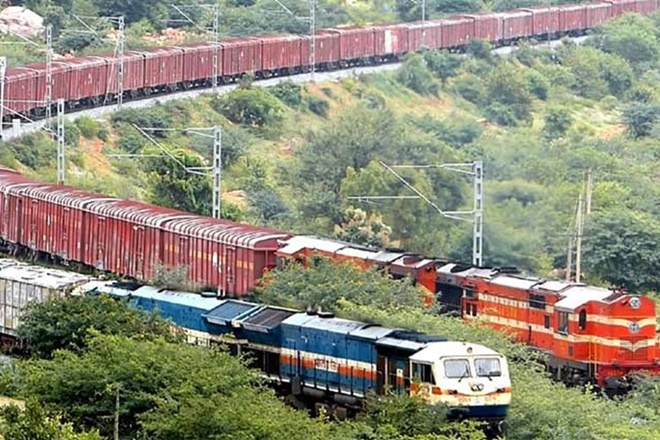The Indian Railways has set the target to get at least 50 percent share in freight traffic by 2030. The share of Railways in freight traffic has gone down to 33 percent in 2015 from 86.2 percent in 1950-51. The dedicated freight corridors and expansion of existing projects are expected to help the Railways in eating a larger share of the pie. “The target is to achieve half of the country’s freight share by 2030, from 33 per cent now,” said an official. The railway board had set up a committee in October to come up with a vision document for 2030. The committee recommended that more private sector participation is necessary to achieve the target, the recommendations of the committee has been put for clearance by railway board before it becomes open to the public.
The expansion of the existing network is in full swing with 505 projects – including 263 doubling, 185 new lines and 57 gauge conversions in various stages of execution. However, the main bet to increase the share of Railways is on dedicated freight corridors. “Immediate attention will also be given on the completion of dedicated freight corridors. The western and eastern dedicated freight corridors are vital to increase the total traffic of Railways by at least 144 million tonne (mt) by 2022,” said the official. The cost of two dedicated freight corridors is 81,459 crore rupees and the railways has spent 45,000 crore rupees so far.
The Japan International Cooperation Agency is providing a loan of Rs. 387.22 billion for the Western India project, the Eastern DFC (Mughalsarai-Allahabad-Kanpur-Khurja-Dadri & Khurja-Ludhiana) is being funded by the World Bank through a loan of $2.360 billion. The availability of loans was ensured by this government in the last four years. The Railways is planning to commission WDFC and EDFC by April 2020. The trial run on WDFC achieved a speed of 100 km per hour.
The planning & development, mobilization of financial resources and construction, maintenance and operation of the Dedicated Freight Corridors is done by The Dedicated Freight Corridor Corporation of India Limited (DFCCIL), which is a corporation under Ministry of Railways. Except for EDFC and WDFC, three more corridors were approved by the Modi government in the 2016-17 budget. These are the 2328 km long East-West Corridor between Kolkata to Mumbai, the 2327 km long North-South Corridor between Delhi and Chennai, and 1115 km long East Coast Corridor between Kharagpur and Vijayawada. Another 890 km long South-West dedicated freight corridor is planned between Chennai and Goa. This will complete Golden Quadrilateral Freight Corridor (GQFC) which will link four largest metropolitan cities of Delhi, Mumbai, Chennai and Kolkata and two diagonals North-South Dedicated Freight Corridor (Delhi-Chennai) and East-West Dedicated Freight Corridor (Kolkata-Mumbai). These carry 55% of the India Railway’s freight traffic over a total 10,122 km (6,290 mi) route length.
The Railways were losing their edge in freight transport slowly due to well-developed road infrastructure in the country. This is a huge loss for Railways as freight is the main source of profit for them. As per the National Transport Development Policy Committee Report, in 2010 Railways’ share in freight traffic in the country was estimated to be 36%. The newly dedicated freight corridors will once again give chance to Railways to capture the goods transportation market.
